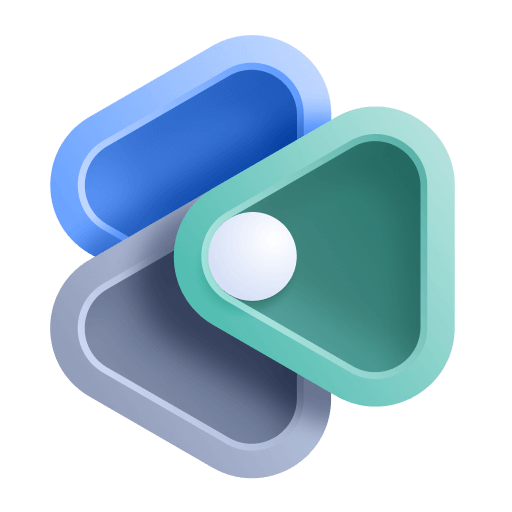Infrastructure & Operations
- Latest Dynatrace
- App
- 13-min read
The 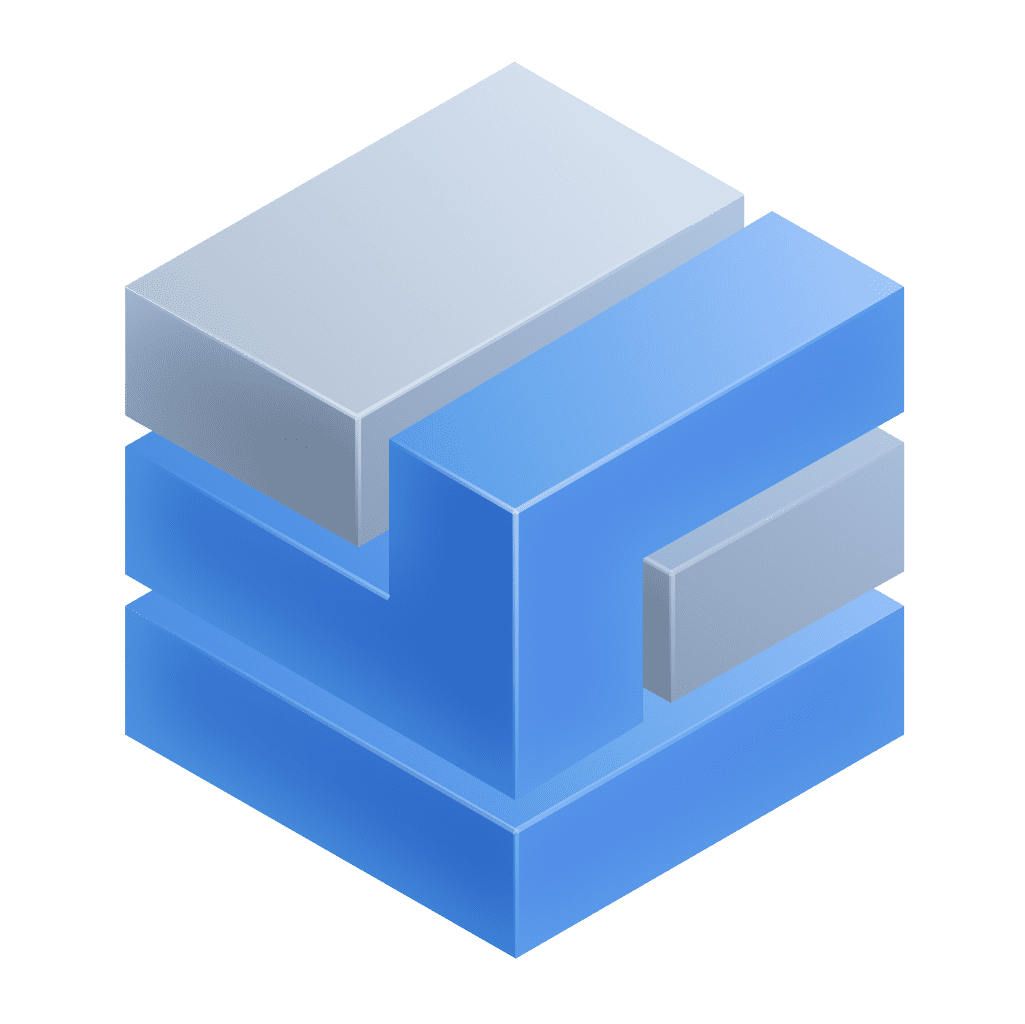 Infrastructure & Operations app simplifies infrastructure health monitoring and facilitates root cause analysis for problems.
Infrastructure & Operations app simplifies infrastructure health monitoring and facilitates root cause analysis for problems.
- Health indicators powered by Davis® AI help you detect early signs of performance degradation to quickly see which areas of your environment need attention.
- Check infrastructure host health metrics, logs, and events for all infrastructure entities.
- Drill down from
 Infrastructure & Operations to any infrastructure entity metrics, logs, or events.
Infrastructure & Operations to any infrastructure entity metrics, logs, or events.
Prerequisites
- Deploy Dynatrace OneAgent on your hosts—it's the optimal choice to collect the most granular metrics and network insights.
- If you are using cloud services, integrate your cloud infrastructure with Dynatrace. Follow the specific integration guides for AWS, Azure, Google Cloud, or other cloud providers.
Permissions
The following table describes the required permissions.
Using  Infrastructure & Operations you get an up-to-date and comprehensive view of your monitored environments. See how to navigate the app to quickly identify areas that require attention and drill down to the exact root cause of issues.
Infrastructure & Operations you get an up-to-date and comprehensive view of your monitored environments. See how to navigate the app to quickly identify areas that require attention and drill down to the exact root cause of issues.
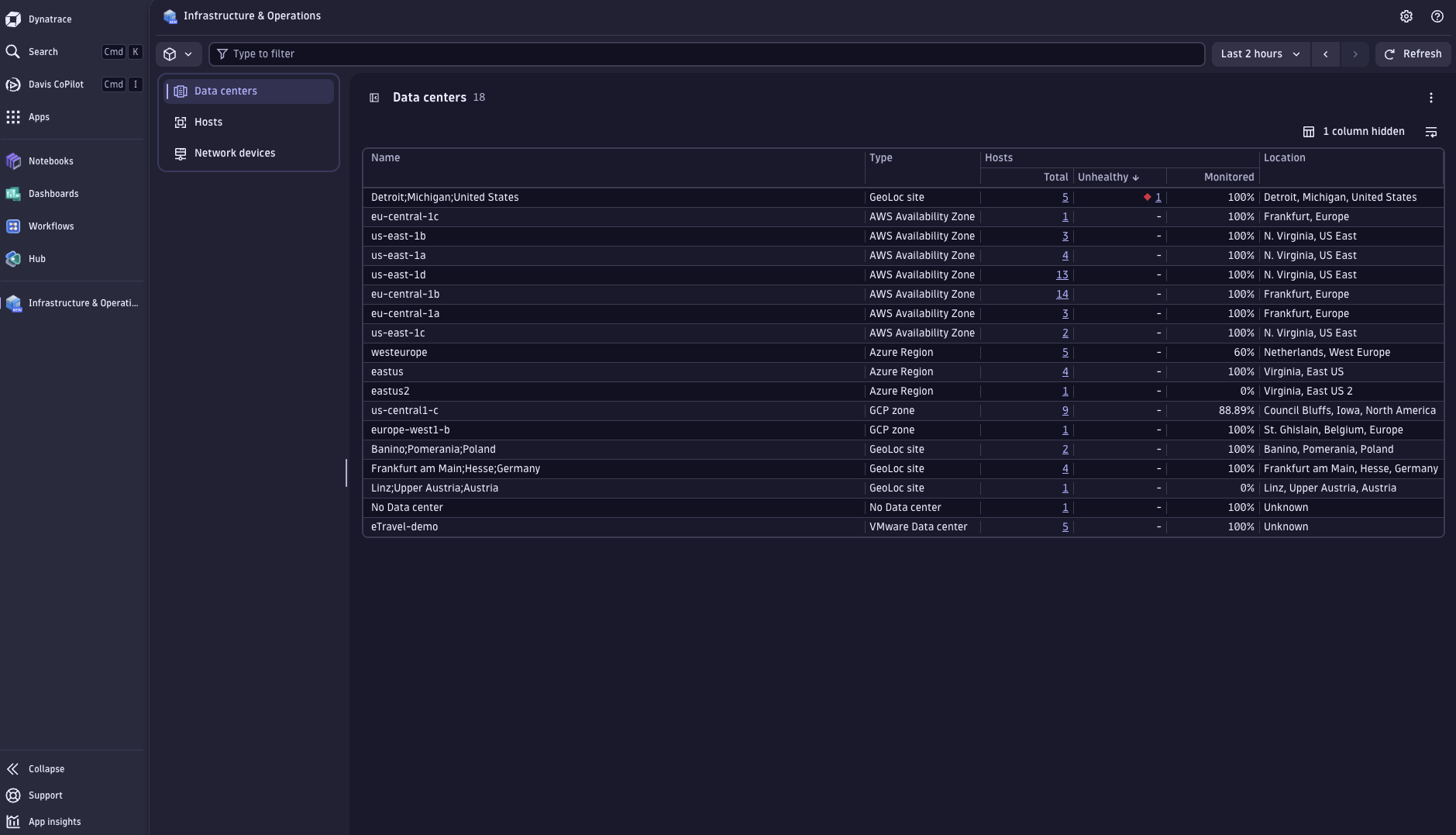
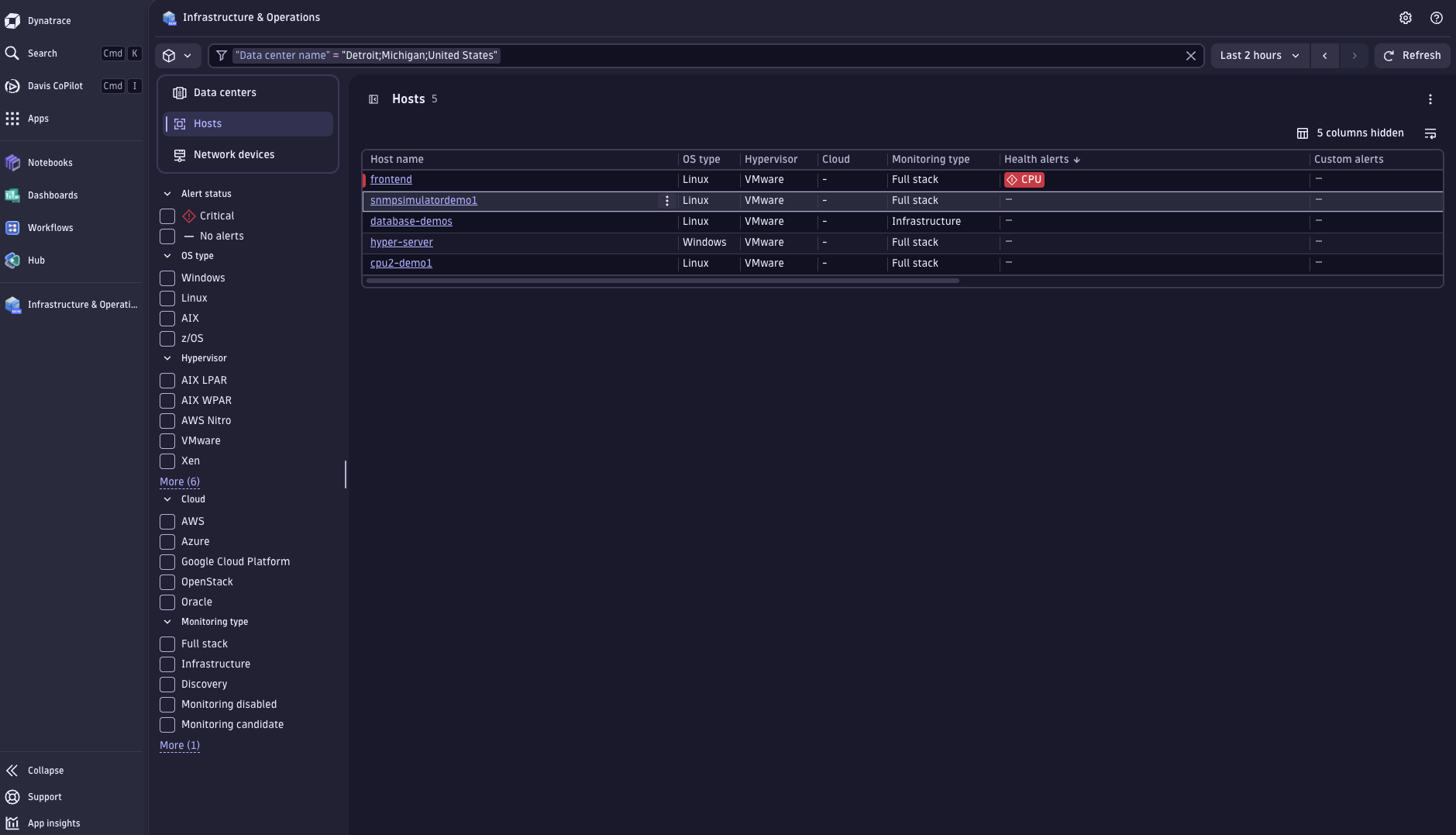
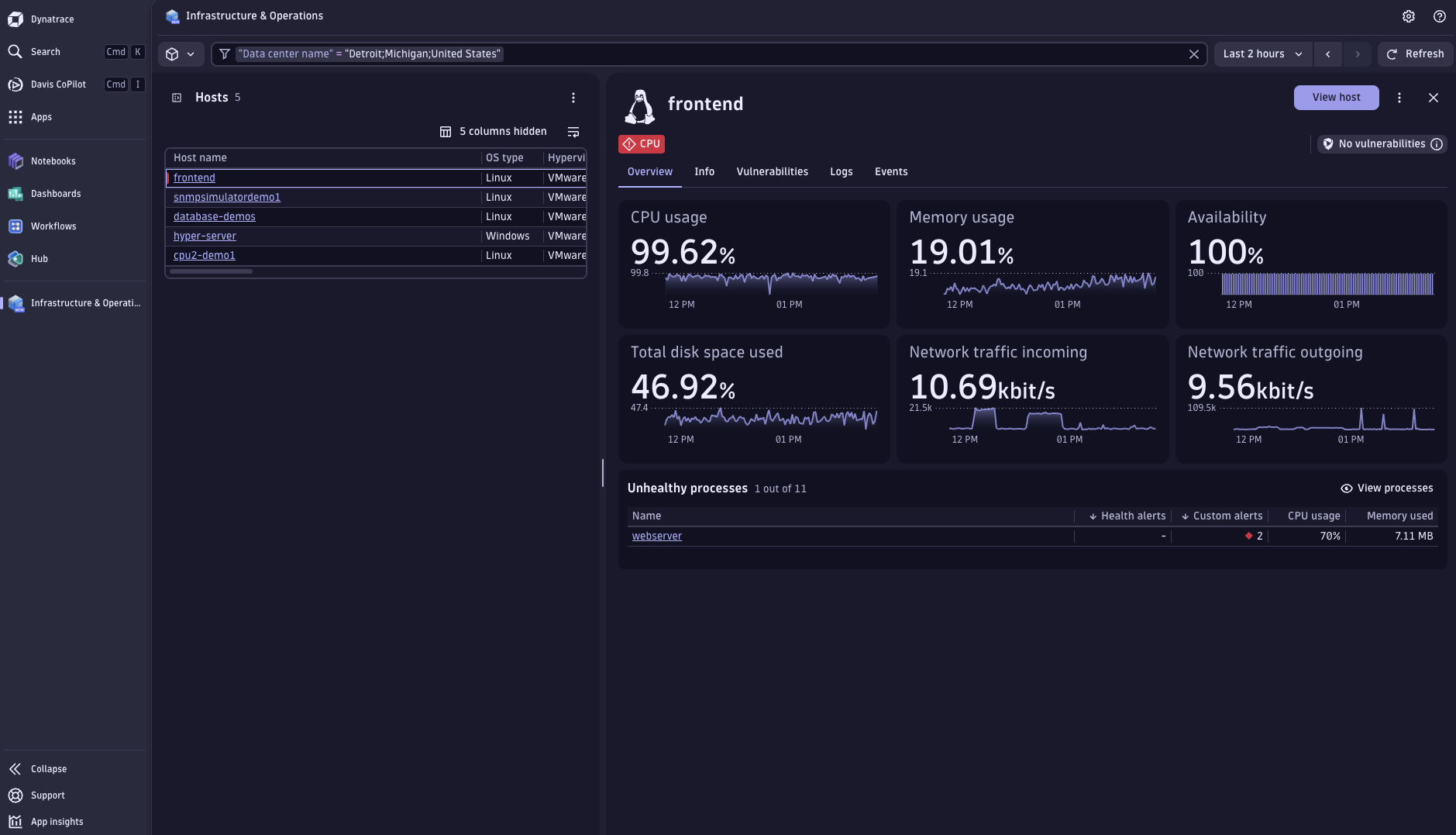
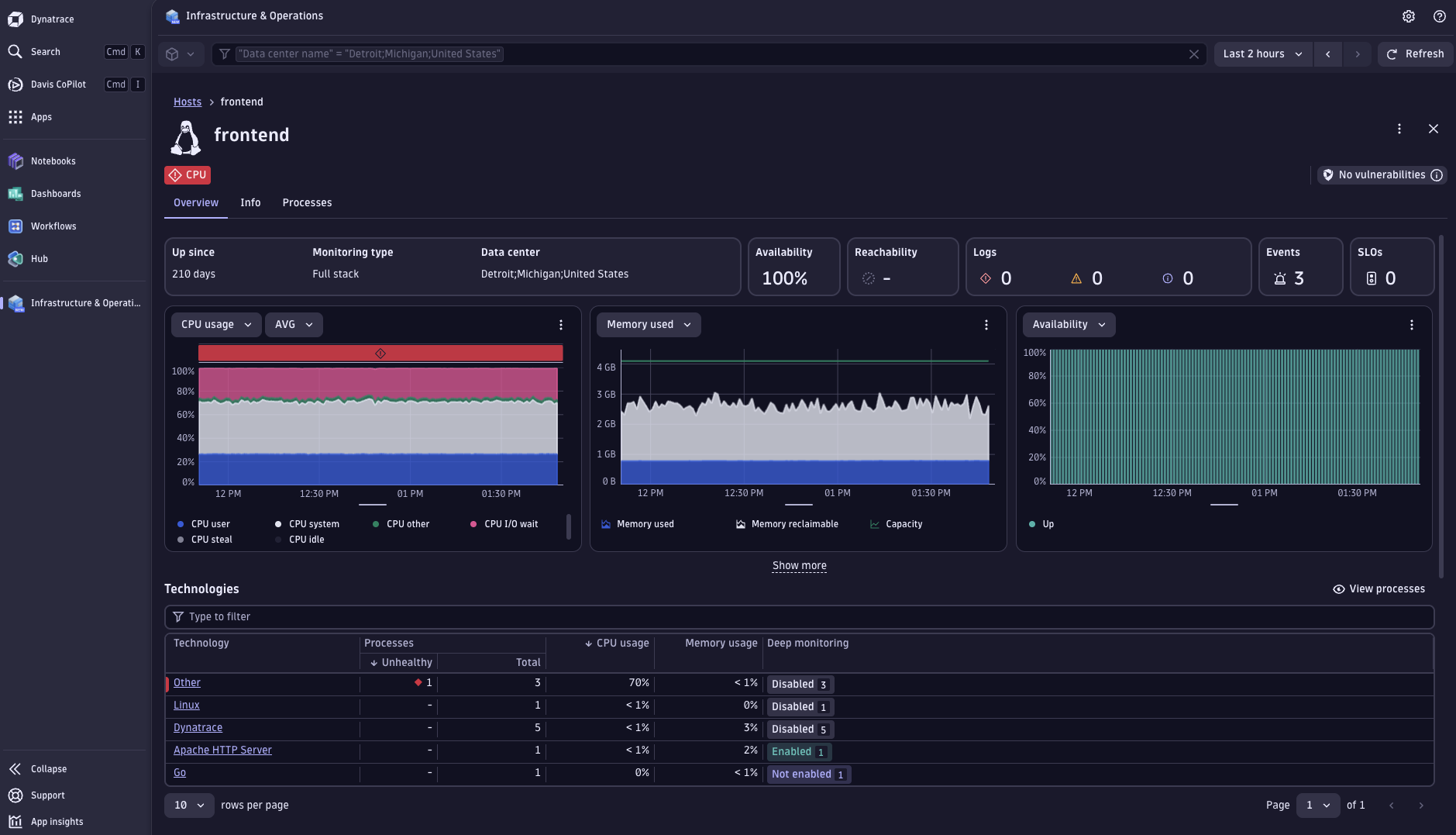
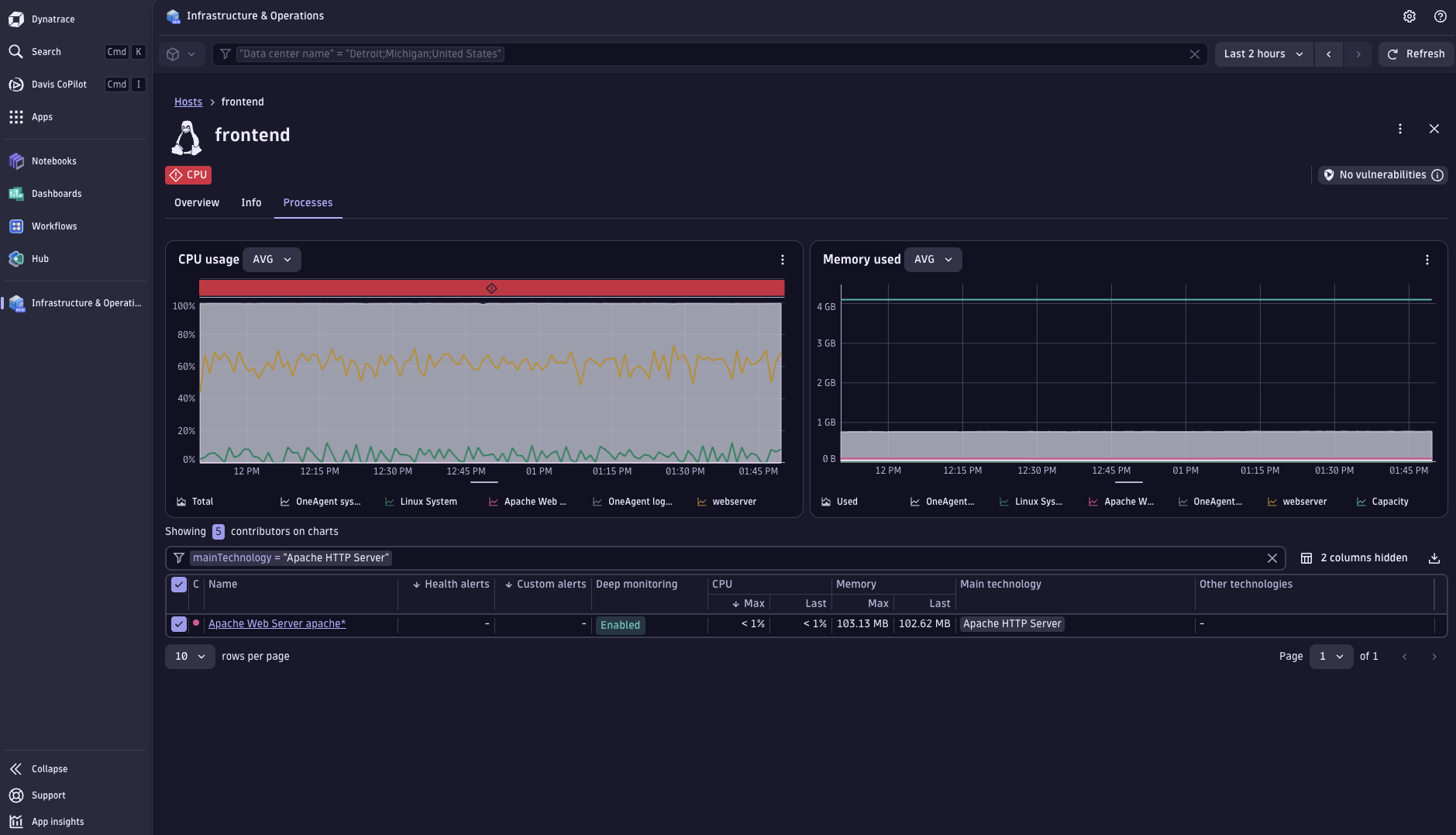
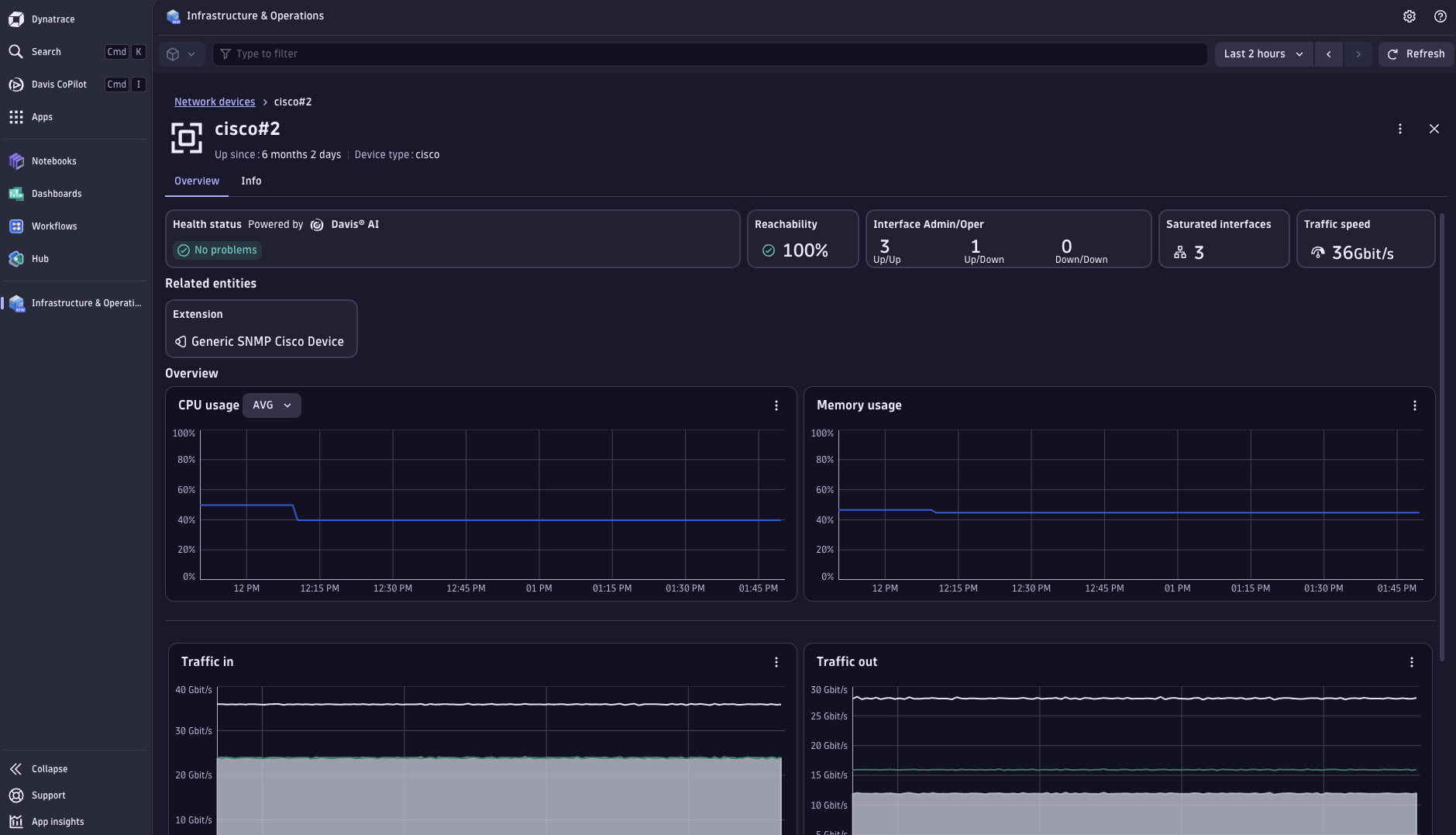
Navigation and filtering
The  Infrastructure & Operations app presents the data for your data centers, hosts, and network devices in lists.
Infrastructure & Operations app presents the data for your data centers, hosts, and network devices in lists.
Navigation
Use the table options to navigate to the details that you need.
- To sort the table by a particular column, select the column header.
- To show or hide columns, select Column settings and then select the columns you want to display.
Access details about your hosts and network devices
To get the details about a selected host or a network device
-
Go to
 Infrastructure & Operations > Hosts or
Infrastructure & Operations > Hosts or  Infrastructure & Operations > Network devices.
Infrastructure & Operations > Network devices. -
Select a Host from the list. You can sort and filter the list as needed.
If you select the name of the Host or Network device, the full-page Overview opens with all the details. If you select any of the Host or Network device columns, the side panel opens with all the specific information.
Side panel
The side panel for hosts and network devices gives you a convenient overview of the data for each selected host or network device on the same page.
The data in the side panel is organized in the following sections:
Hosts side panel
Section
Description
Overview
Provides insights into performance analytics, which include CPU usage, memory usage, total disk space used, and network traffic. It also shows the host processes, properties, tags, and ownership for fast host identification.
You can enhance the filtering options by adding tags to each host. For details, see Best practices and recommendations for tagging.
Vulnerabilities
Contains all the detected vulnerabilities. Use the filter option to narrow down your selection.
SLOs
Allows you to monitor service-level objectives by viewing their name, status, error budget, and timeframe. Selecting Clone SLO from the Actions column, will redirect you to the SLO wizard to create a new SLO. For more details, see Configure and monitor service-level objectives with Dynatrace.
Logs
Contains pre-made queries for logs. Select Run query to see a detailed view of your logs in a log browser. From the page that opens, you can perform further modifications to get more information about issues.
Network devices side panel
Section
Description
Overview
Provides insights into performance analytics, including CPU usage, memory usage, up/down interfaces. It also shows the network interfaces, tags, and properties.
Problems
Allows you to view all problems detected by Davis® AI. Selecting a particular problem shows the affected entity.
Messages
This section is available for auto-discovered network devices that are not currently monitored. An extension can be installed and configured to monitor the device.
Full-page view
To display the full-page view for a Host or Network device
- Go to
 Infrastructure & Operations > Hosts or
Infrastructure & Operations > Hosts or  Infrastructure & Operations > Network devices.
Infrastructure & Operations > Network devices. - Select Host or Network device.
If the side panel view is open, you can switch to the full-page view by selecting the View host or View network device button, in the top right corner.
Hosts full-page view
The data in the full-page view for hosts is organized in the following sections:
Section
Description
Overview
Presents the available data for the host in the following panels: Host overview, Technologies, Connections, Network Analysis, Disk Analysis. You can adapt the presentation of data in each section by filtering it and adding or removing columns in the lists.
You can add OS services monitoring to the available data list by configuring the services you want to monitor. For details, see OS services monitoring.
Info
Shows the host tags, properties, and ownership.
Processes
Displays the CPU and memory usage of all processes in a graph view. This allows you to identify what each process is doing. To see details on a single process, select it in the table to display process-specific tabs with information such as CPU and memory usage, working set size, incoming and outgoing traffic, and properties and tags.
Selecting Host Properties in the upper-right corner of the page opens a side panel with the host tags, properties, and ownership.
Network devices full-page view
The data in the full-page view for network devices is organized in the following sections:
Section
Description
Overview
Presents the available data for the network device in the following panels: Health status, Interface Admin/Operator, Saturated interfaces, Traffic speed.
You can also see any related entities if the device is monitored by an extension.
There are sections with details for CPU usage, memory usage, and network interfaces.
Info
Shows the tags, and properties for the chosen network device.
Filtering
You can filter the tables in the app by using the filter field with listed suggestions. Currently, you can use basic syntax (grouping filter statements and using logical operators is not supported). As you type, the relevant options are displayed.
You can add several statements to narrow down the filter results. For example, "Alert status" = Critical name != *1b*. In this case, you narrow the search to hosts with more than 4 problems and names that don't include 1b.
For more details on using filters, see Filter field.
Analyze host overview graphs
You can define which graphs or charts are displayed in the host's full-page view by selecting 
Export host data to Notebooks
To analyze and present a host's data from  Infrastructure & Operations in
Infrastructure & Operations in 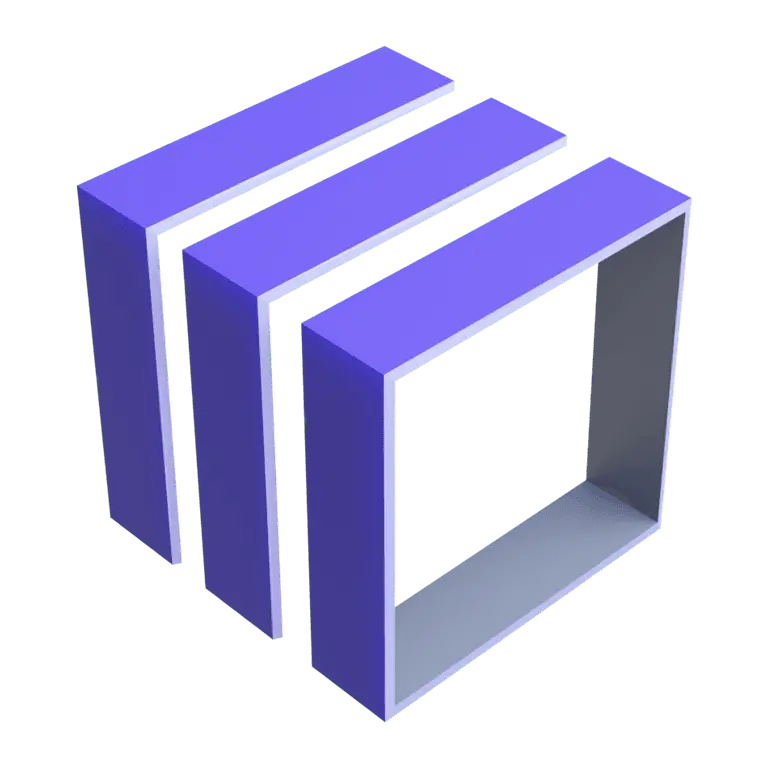 Notebooks
Notebooks
- Go to
 Infrastructure & Operations > Hosts.
Infrastructure & Operations > Hosts. - Select the Host. The full-page view of the Host opens.
- Select the graph or chart you want to analyze and select > Open in Notebooks
.
- Choose whether to open the graph in a new or existing notebook.
View host processes
The Host Processes include CPU usage and the Memory usage charts and a table Showing 5 contributors on charts.
To view the Host Processes
-
Open the full-page view of the Host.
-
Select the Processes tab.
You can see the CPU usage and the Memory usage charts. The table below the CPU usage and the Memory usage charts is Showing 5 contributors on charts. You can change the 5 contributors by selecting other ones such as health alerts, custom warnings and CPU usage.
Display code-module metrics
There is an option to inject code modules and display the injected data in the app. For more details, see Universal injection of code modules.
After selecting a process from the list, the data is presented in a dedicated tab.
Monitor incoming and outgoing connections
In the full-page view of a host, under Connections, you can see a quick overview of each type of connection, the total number of connected entities, and the number of problems. Expand the panel to see a list of connected entities and possible problems for each of them. You can also see which processes from the current host communicate with other processes or services that aren't part of the host.
The Connections table allows you to identify potential sources of problems that don't happen directly on the host. Select the connected entity marked with to navigate to its details page and investigate the issue.
The incoming and outgoing process connections in the table display processes with the most issues based on network and CPU usage.
View data imported via extensions
The full-page view of a host or a network device can include data imported by extensions. The data is presented in a dedicated tab called Extensions.
For more details on setting up extensions, see About Extensions.
There are dozens of extensions you can use to load data in the Extensions tab. To check whether a particular extension version supports data injection, see the details of the selected extension in the Hub or, if it's a custom extension, contact its author.
Minimum required versions of extensions
Ensure your system has these minimum versions of the installed extensions to avoid any issues with displaying the data in  Infrastructure & Operations.
Infrastructure & Operations.
This list concerns extensions for supporting network devices and is not exhaustive. Each network device can have more extensions.
| Extension | Minimum version |
|---|---|
| SNMP Autodiscovery | 2.2.8 |
| Generic Cisco Device | 2.1.4 |
| F5 BIG-IP | 2.10.0 |
| Palo Alto firewalls | 2.7.0 |
| Juniper Networks (SNMP) | 1.5.0 |
| Generic network device | 2.0.0 |
| Fortigate | 1.2.21 |
See our detailed Generic network topology guide on how to make your custom extensions appear in  Infrastructure & Operations.
Infrastructure & Operations.
Measure the reachability of a host or device
The Reachability column on the Hosts and Network devices pages shows how easily you can access a device or a host over the network from a remote location. For more details, see Synthetic Monitoring.
The value presents the ratio of fully-available Network Availability Monitors (NAM) (with 100% availability over the selected time-period) to all configured monitors for the given host or network device.
To use this feature, you need to configure NAM for the desired device or host. For details, refer to Configure a NAM monitor.
Use segments to filter details about your hosts
You can use segments in  Infrastructure & Operations to logically structure observability data for your hosts.
Infrastructure & Operations to logically structure observability data for your hosts.
Some of the advantages of using segments are
- Flexibility: Segments can be used across different apps that support that feature.
- Ease of use: You can create and use really complicated filters quickly.
- Option to share: You can share filters across different users.
Apply a segment
- Go to
 Infrastructure & Operations > Segments.
Infrastructure & Operations > Segments. - Select the segment name from the drop-down menu. If needed, select parameters for the selected segment.
- Select Apply to activate the segment.
Add a segment
- Go to
 Infrastructure & Operations > Segments.
Infrastructure & Operations > Segments. - Select Manage segments > Segment.
- Add a name for the segment.
- Optional Add a description.
- Use one of the available options for filtering data
- Add a variable. This requires creating a query.
- Add data types. Select from the available options in the menu.
- Add entities and topology. Select from the available options in the menu.
- Select Save.
For more details on managing segments, refer to Segments.
View health alerts and warning signals
In  Infrastructure & Operations, you can view health alerts and warning signals.
Infrastructure & Operations, you can view health alerts and warning signals.
Health alerts and warning signals help you monitor your infrastructure by providing clear, actionable insights. These features reduce the noise from infrastructure issues and improve alerting capabilities, so you can focus on what matters most. This is achieved through better categorization of detected malfunctions.
- For critical events, a Health alert is raised, triggering a Dynatrace Problems investigation.
- For non-critical situations, a Warning signal informs you of a potential challenge.
 Infrastructure & OperationsInfrastructure Observability
Infrastructure & OperationsInfrastructure Observability